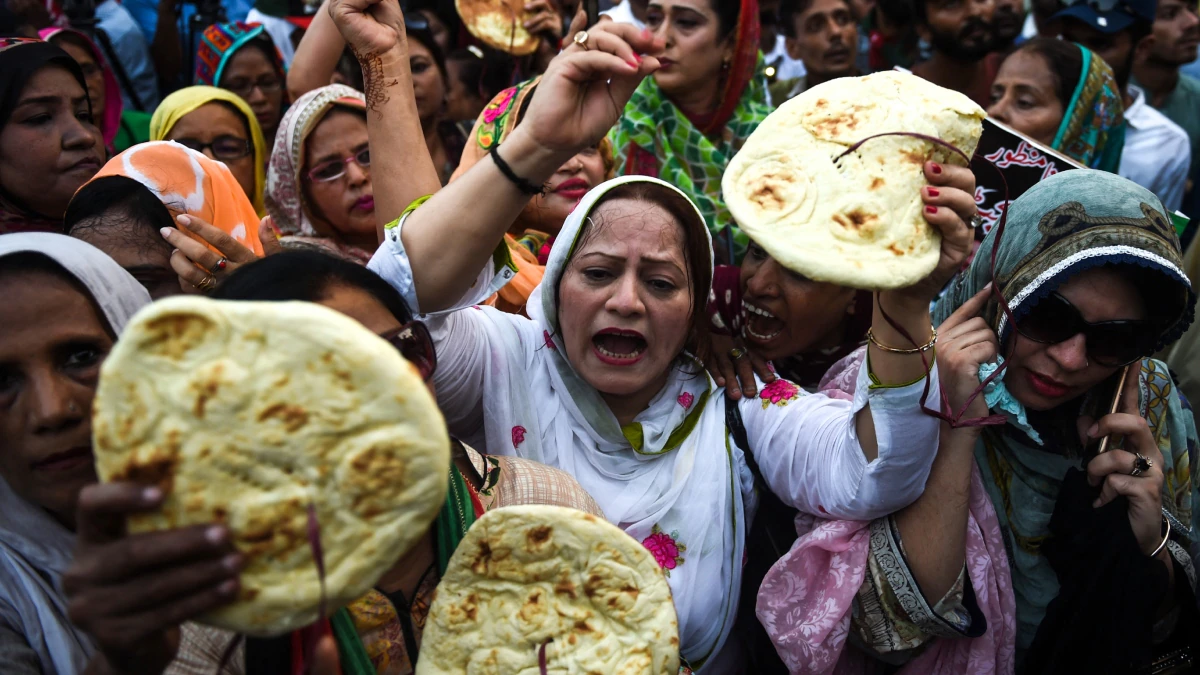On Tuesday, the Finance Ministry of Pakistan announced another hike in the prices of petrol and high-speed diesel. This marks the second price hike on fuel in a month. The country has been increasing costs to meet the fiscal objectives ordained by the International Monetary Fund.
This time, there will be a 17.5 Pakistani Rupees increase in Petrol prices, total price amounting to 290.45 ($0.9991) Rupees per litre. This price will be effective from August 16, informed the Pakistan Finance Ministry on X (formally Twitter). High-speed diesel will now cost 293.40 ($1.01) rupees per litre after a hike of 20 Pakistani rupees.

Rising Inflation in Pakistan
Pakistan is currently gripped in severe inflation which has left the innocent common public struggling to make ends meet. Prices of essential goods such as flour, vegetables, and milk have touched the sky. There is a widespread shortage of food items which is causing riots and clashes on a daily basis.
Increasing prices of fuel, oil, and lubricants are making it hard for industries and factories in Pakistan to sustain themselves. The worst effect of the soaring fuel prices could be seen in the Pakistani Army. Kerosine prices have also escalated to 164 rupees, the army is unable to source the required quantity of reserve fuel to operate its tanks, trucks, and armoured vehicles.
They are not able to conduct their routine drills and practices owing to the shortage of fuel. Earlier this year, there were reports of Pakistani field commanders writing to the Quarter Master General about the depletion of food reserves. According to reports, there is a shortage of foodgrains in all the messes to feed its soldiers. This is a very critical situation, given that the military is a highly crucial element of the Pakistani political setup.
The Severity of the Situation
The global lender’s data has indicated that debt-ridden Pakistan will soon become the fourth largest borrower from the International Monetary Fund (IMF) after receiving a $3 billion loan earlier this year. Argentina ($46 billion), Egypt ($18 billion), and Ukraine ($12.2 billion) are the three biggest indebted countries before Pakistan.
The country is engulfed in a severe balance-of-payments crisis as a result of its domestic issues combined with the spillover effects of the Russia-Ukraine war. Islamabad is a frequenter at the IMF. It has received at least a dozen bailouts from the international monetary body since the 1950s.
Pakistan’s external debt service obligations amounted to a massive $2.04 billion last month. This amount includes a $2.4 billion non-guaranteed debt owed to China. Moreover, it is yet to repay external debt loans to France and Japan. Pakistan also owes vast amounts to monetary bodies such as the Asian Development Bank, International Bank for Reconstruction and Development (IBRD), and International Fund for Agricultural Development (IFAD).

What is the Government Doing?
Amid such conditions, Pakistan’s Finance Ministry issued a notification last month wherein Rs 2.3 billion were sanctioned for the purchase of new luxury vehicles for assistant commissioners and deputy commissioners. This speaks volumes about the priorities of the Pakistani government.
Meanwhile, nearly 150,059 highly qualified Pakistani nationals emigrated from their country in search of jobs in the past decade. According to the Bureau of Emigration and Overseas Employment, the highest number of skilled Pakistanis left their country in 2022. Due to the economic and political instability in the country, unemployment has also increased. Qualified workers are not able to get desirable jobs and are, hence leaving the country. The situation in Pakistan is precarious.













